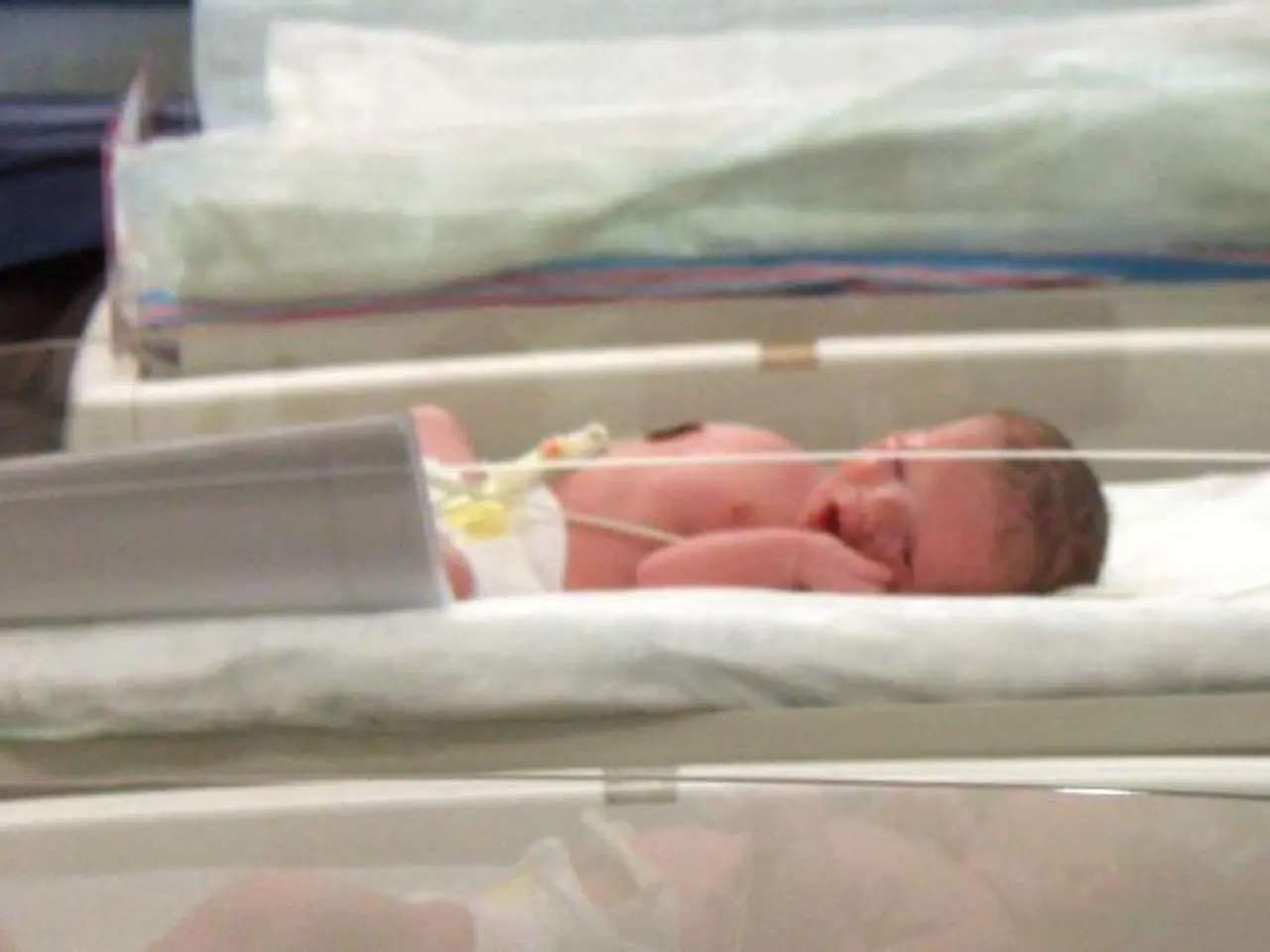Development and Progression of Necrotizing Enterocolitis: An Examination of Its Underlying Biological Mechanisms
Preterm Babies Face Increased Risk of Deadly Gut Condition
A serious and life-threatening condition known as Necrotising Enterocolitis (NEC) affects premature or low birth weight babies, with approximately 7% of those born weighing less than 1500 grams at risk of developing the condition.
Immature Gut Vulnerable to Injury
Prematurity increases the risk of NEC primarily because the immature intestine of preterm infants is more vulnerable to injury, inflammation, and bacterial invasion. The gut barrier and immune defenses in preterm neonates are not fully developed, making them susceptible to intestinal necrosis and inflammation characteristic of NEC.
Risk Factors for NEC
Additional factors contributing to the increased risk of NEC include low birth weight and gestational age, adverse intrauterine environment, prolonged antibiotic exposure, microbial dysbiosis, ischemia-reperfusion injury, and other neonatal conditions such as hemolytic disease of the newborn.
Symptoms and Complications
NEC is characterised by inflammation and death of the gut wall, which can progress to a systemic infection, organ failure, and death. Symptoms include distension of the abdomen, vomiting, blood in their stools, and intolerance to food. Complications increase in those requiring surgical intervention, where the death rate is as high as 50%.
Breast Milk Offers Protection
Breast milk is protective against NEC and is an established optimal source of nutrition and support for a baby's immune system. The protective effects of breast milk are likely due to the key nutrients and protective immune components within breast milk, including antibodies and protective gut bacteria.
Untreated NEC Can Be Deadly
If left untreated, a hole in the gut wall can occur, causing bacteria to enter the abdomen and potentially leading to life-threatening infection and death.
In conclusion, prematurity predisposes to NEC by rendering the gut immature and vulnerable to injurious factors such as inflammation, abnormal bacterial colonization, and ischemic injury. This vulnerability is compounded by inflammatory placental conditions, antibiotic exposure, and certain neonatal diseases, forming a multifactorial risk profile for NEC development.
- The importance of nutrition and health in preventing Necrotising Enterocolitis (NEC) cannot be overstated, as breast milk, rich in key nutrients, immune components, and protective gut bacteria, offers significant protection.
- In the realm of workplace-wellness, understanding and addressing risk factors for NEC, such as prematurity, antibiotic exposure, and microbial dysbiosis, can contribute to a healthier workforce, especially among new parents.
- The science behind NEC suggests that chronic conditions, like chronic kidney disease, and chronic diseases, may share pathophysiological similarities with NEC, making critical interventions such as therapies and treatments essential.
- Poor mental health, often a result of medical conditions like NEC, can negatively impact future health and wellness, particularly in men and women, underscoring the need for improved mental healthcare resources.
- Fitness and exercise routines can help maintain skin health and bolster overall well-being, reducing the risk factors associated with NEC development and improving resilience in the face of potential complications.
- With the growing understanding of the complex interplay between NEC and various medical conditions, ongoing research in skin care, aging, and womens-health is crucial to developing targeted preventive measures and treatments.
- In the realm of parenting, early education on weight management and proper nutrition can help reduce the risk of NEC and other afflictions down the road.
- Medicare's funding and coverage for NEC research, diagnoses, and treatments are vital to a comprehensive approach to addressing this life-threatening condition in preterm babies.
- While pharmaceutical interventions can aid in the treatment of NEC, the potential benefits of complementary alternatives, such as CBD, should also be studied to provide broader therapeutic options.
- Given the deleterious consequences of NEC, it is essential to promote health and wellness through educational initiatives targeted at healthcare practitioners, parents, and the general public.
- A holistic approach to health, encompassing workout routines, dietary choices, mental health care, and physician consultations, can significantly reduce the risk of NEC and other life-threatening conditions in preterm infants.




